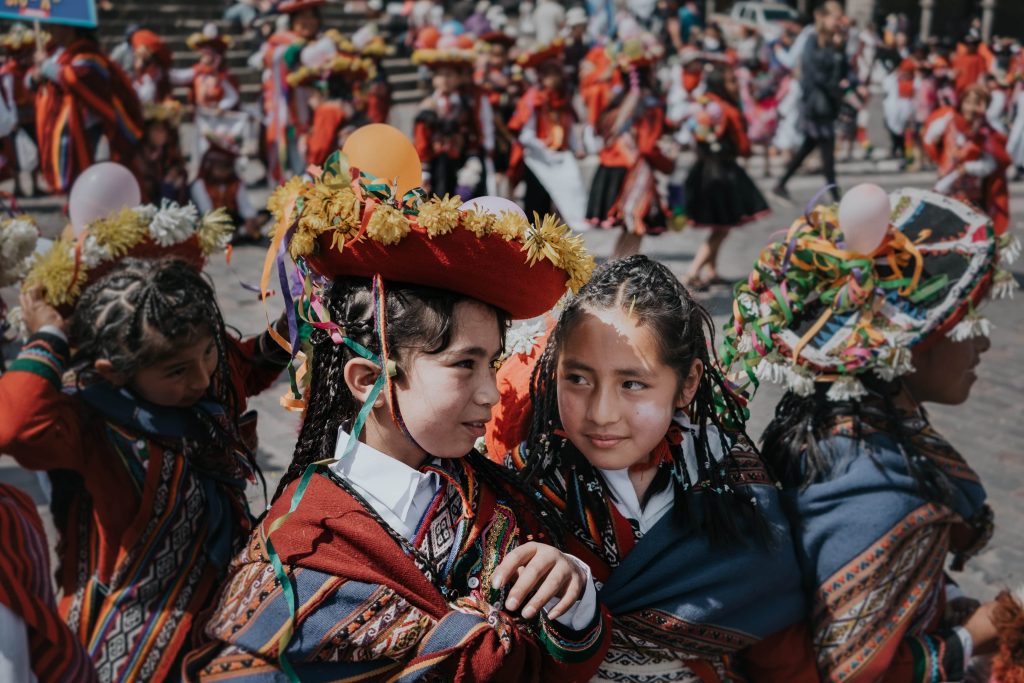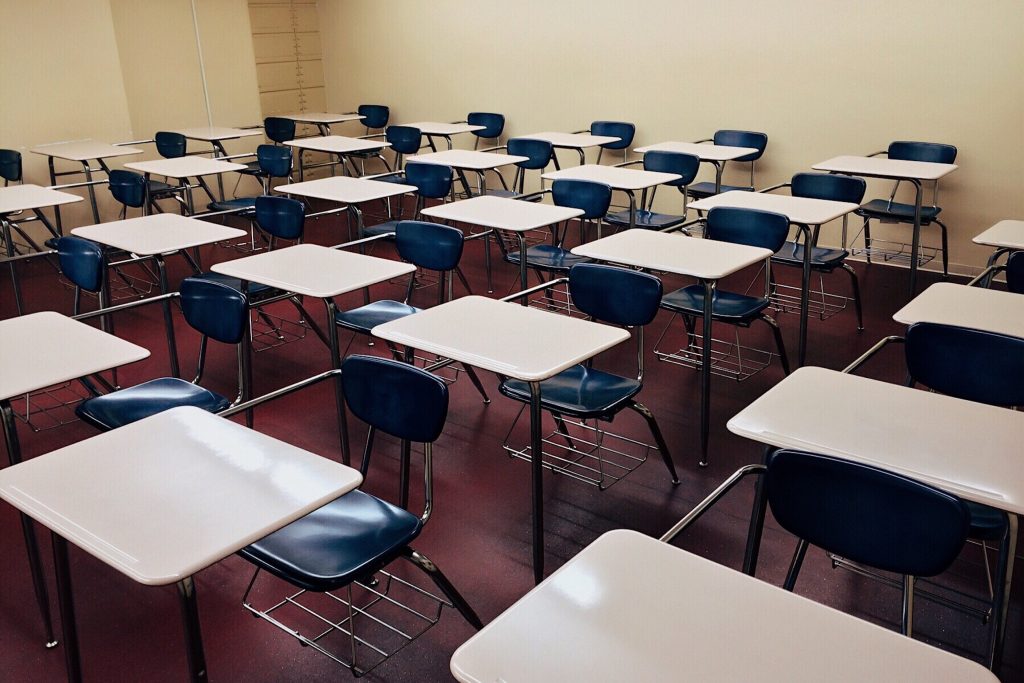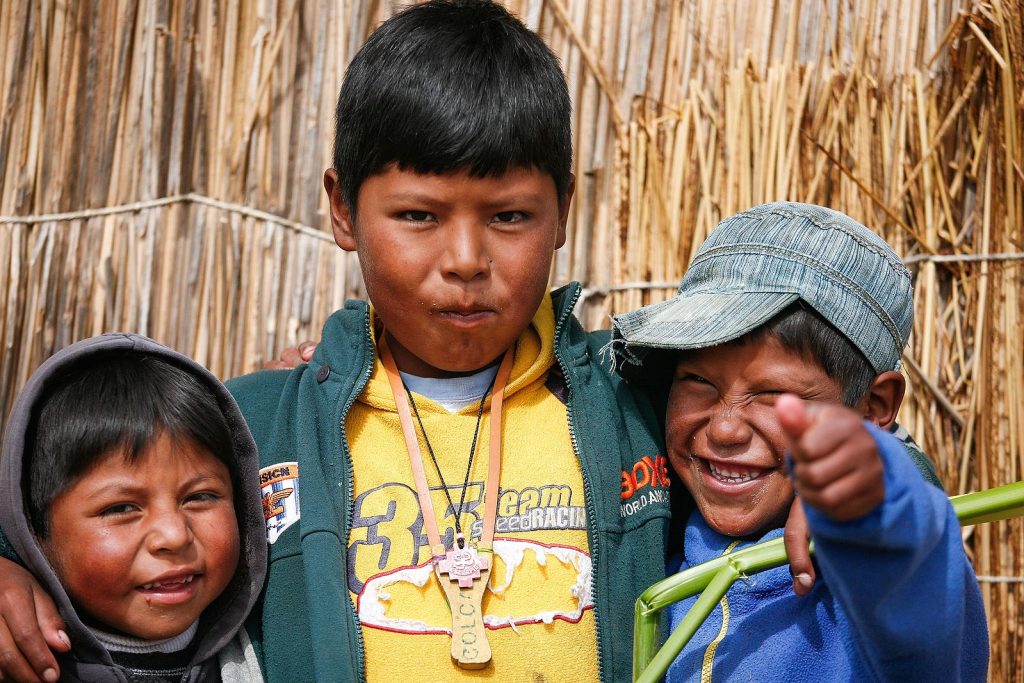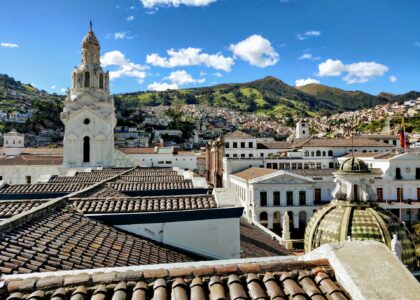Peru, a tapestry of cultures and tongues, boasts over 40 diverse languages, vividly depicting its rich heritage. Imagine being a child growing up amidst this mosaic, speaking an indigenous language at home, only to face the challenge of mastering Spanish in school. Many indigenous children walk this path, striving to bridge the gap between their roots and the broader Peruvian society. It’s not just about learning a second language; it’s about ensuring their voices, rooted in deep traditions, don’t get lost in the vast symphony. Recognizing and preserving this cultural richness is essential, not just for Peru but for all of humanity.

Peru's Linguistic Landscape
Picture this: a nation where the hum of conversations drifts in over 40 distinct languages, each carrying stories of ancient traditions and tales passed down through generations. In Peru, this isn’t a lofty dream; it’s a daily reality. A striking 1,000,000 children come home to the comforting cadence of indigenous languages, shared secrets with siblings, and tales from grandparents in voices that resonate with history. But when these very children step into the realm of formal education, they’re met with the challenge of grasping Spanish, a language often foreign to their ears. While Spanish opens doors to wider opportunities, for many, it’s their second language, leading to a gap in learning outcomes. These children, rich in linguistic heritage, grapple to find their footing in two worlds. It’s not just about language; it’s about equity, understanding, and ensuring every child gets a fair chance at success.

A Progressive Leap in 2007
2007 marked a pivotal year for Peru that signaled a renaissance in its educational approach. Recognizing the unique linguistic challenges its indigenous children face, the Government of Peru introduced a game-changing policy. Schools in indigenous regions were not merely labeled as regular institutions; they were designated as ‘intercultural and bilingual.’ This wasn’t just a tag but a commitment, a promise to weave the threads of tradition with modern education.
By Grade 4, a significant year in a child’s learning journey, assessments took a turn for the better. Instead of exclusively testing in Spanish, children were now assessed in their indigenous languages alongside Spanish. Imagine the confidence boost in a child when they’re evaluated in the language they’ve heard since infancy, the language of their dreams and secrets. By doing this, reading became less of a hurdle and more of a joy.
This wasn’t merely an academic decision; it was a message. A message that said, “Your language matters. Your culture is important.” Through these policies, Peru took a significant step in ensuring that learning became a bridge, not a barrier, for its young minds.
The Impact of Bilingual Assessments
When policies truly resonate with the needs of the people, the impact is nothing short of profound. In Peru, the introduction of bilingual assessments reached out like an embracing hand, covering an astounding 90% of indigenous learners. It wasn’t just about numbers; it was about ensuring the majority felt seen and heard.
By integrating indigenous languages into assessments, the very soul of Peru—its diverse cultures and languages—found its rightful place at the center of the education system. No longer were these languages relegated to the sidelines; they stood proud, intertwined with the fabric of learning.
But what’s data if it doesn’t lead to action? The insights gained from bilingual assessments became the compass guiding Peru toward a more inclusive future. It illuminated areas needing tailored textbooks, spotlighted the importance of culturally-relevant teaching materials, and emphasized the need for teacher training that bridges two worlds. This wasn’t just policy-making; it was laying the foundation for an education system where every child, regardless of their linguistic background, felt they belonged. It showcased Peru’s unwavering commitment to an inclusive, equitable future where the wisdom of the past informs the promise of tomorrow.

The Spirit of the Peruvian People
Peru’s heart beats in the rhythms of its people, a community deeply rooted in a mosaic of traditions that span the majestic Andes to the mysterious Amazon. Their heritage isn’t just a collection of stories; it’s a lived experience, a testament to resilience, community, and a profound connection to the land.
This deep-seated respect for heritage has naturally fostered a valuing of linguistic diversity. For the Peruvian people, each language is more than just words; it’s a unique lens to view the world, a distinct melody in the country’s harmonious song. Their history, filled with tales of mighty civilizations and ancient wisdom, consistently emphasizes the power of diverse voices coming together.
In this context, multilingualism isn’t just a policy or a practice—it’s a celebration. It’s an affirmation that every voice, every dialect, contributes to the rich tapestry that is Peru. Their unwavering spirit reminds us that diversity isn’t just strength; it’s the essence of community.
The Road Ahead
The journey of shaping Peru’s education has been one of discovery, collaboration, and boundless hope. One of the profound lessons learned is the undeniable power of inclusive dialogue. When communities speak, and more importantly, when they are heard, real change becomes possible.
As a guiding star, UNICEF championed this ethos, ensuring that conversations around education were not just top-down directives but true partnerships with indigenous communities. Their role became the bridge between tradition and modernity, between the past and a promising future.
Yet, the path forward also underscores a pivotal need: bringing these assessments and insights right into the heart of classrooms. The real magic happens when teachers on the frontline harness this data to shape curriculums and methodologies. It’s about ensuring that every classroom and lesson resonates with the spirit of inclusivity. With these pieces in place, the future of Peruvian education shines brightly, full of possibility.

Embracing the Voices of Tomorrow
In the heart of Peru lies a lesson for the world: to nurture the future, we must honor our diverse past. Bilingual education isn’t just a method; it’s a testament to Peru’s unwavering commitment to inclusivity and cultural reverence. Through education, the vibrant tapestry of languages and traditions continues to flourish, ensuring a legacy that will inspire generations to come.






